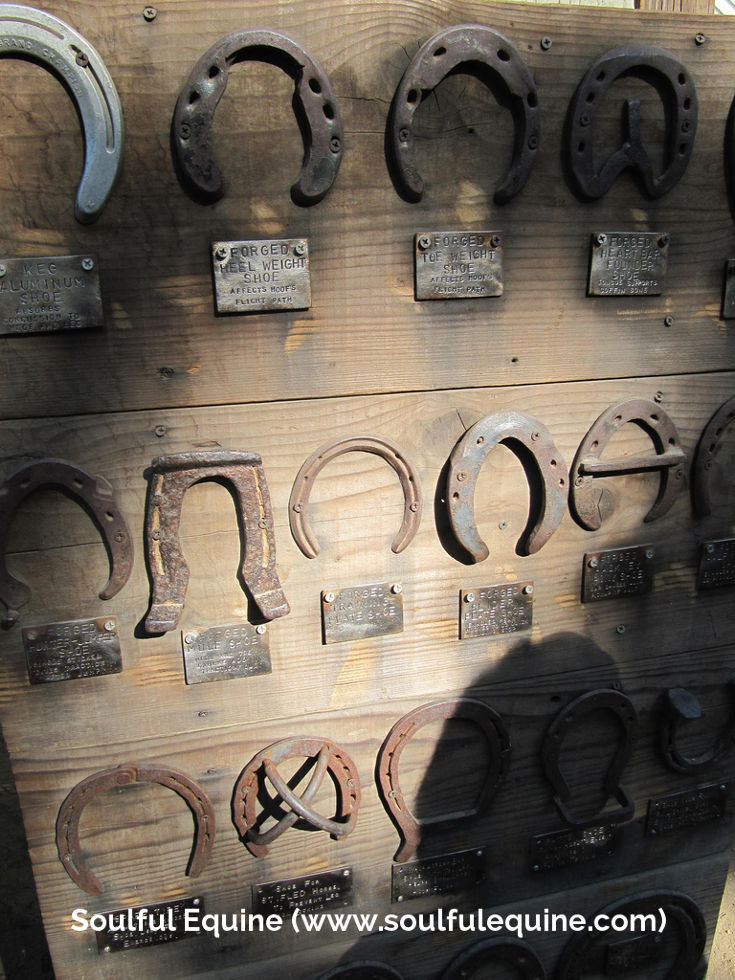 Medieval Times
Medieval TimesThink back for a moment. What caused you to believe that barefoot is best for your horse?
I bet that once you invoked your critical thinking skills, and became knowledgeable about the subject, there was no turning back. As a result, you realized you had to learn continuously, become a thinker and a problem solver.
Since you believe bare is better for your equine partner, do you occasionally run into someone who thinks you’re high on drugs? Crazy? A tree hugger?
At first, human nature takes over – your ego surfaces and you’re ready for battle.
Once the dust settles, you take a step back to see things from their point of view. Plus, you were once in their shoes (no pun intended). You think, “They love their horse, too.”
To avoid criticism, do nothing, say nothing, and be nothing.” ~ Elbert Hubbard
Once ego’s out of the way, you do your best to see both sides, think rationally and without judgment. You come to the conclusion that they believe in nailing iron shoes on a horse as much as you believe in barefoot.
Stop Preaching This Nonsense
I felt compelled to share a comment with you that I received from a reader. As you read through it, note the multitude of issues with the situation and the equine guardian’s choices.
My intent is not to pick on anyone but merely to highlight the difficulties many horse guardians face, especially when choosing between barefoot and nailing on metal shoes.
What do you think about this reader’s dialog, attitude, and message? A clue – there’s a lot going on here.
Comment by Chelsea on the article – Why a Horse with Metal Shoes is Dangerous to Herself and You
Sorry, I have to disagree with you. It seems your only reason is ‘They can slip on concrete’. I have 2 out of my 3 horses barefoot. Not because I think it is best, but because that is what works for them.
My other mare had an AWFUL barefoot farrier prior to my purchase of her. Her feet are just horrid and she was dead lame without front shoes. With front shoes however, she did much better.
Some horses do need shoes. Horses that jump at a high level need them for traction when speeding around a course, they put studs in the shoes to give them grip. Horses that are ridden or driven on roads need shoes.
The occasions where horses need shoes is infinite and has several dependents. I know my horses would not tolerate bulky riding boots on their feet in a sand arena while jumping 3′.
Stop preaching this nonsense and accept that barefoot is not always best. Sometimes it is, but not always.
From this comment I see someone who needs to acquire more knowledge, is frustrated, and has many limiting beliefs when it comes to horses.
No one wants to feel dis-empowered, downgraded, or made to feel bad that they’re not doing what’s best for their horse. I’m a firm believer in setting great examples, taking ego out of the equation, and not taking something like this personally. We’re all learning, growing, and evolving, plus, we’ve all been there.
On that note, what we know today can change tomorrow.
Simply put, the method of nailing an iron shoe onto a horse’s hoof is nothing more than medieval at best. It’s called evolution for a reason. You evolve or you’re left behind.”
Metal Shoes Nailed onto a Horse’s Hoof Cause Damage
It’s a fact that the horse’s hoof is damaged by metal shoes. However, what most don’t understand is that poor barefoot care is also damaging. I’m 100% about keeping a horse barefoot, but only if it’s done in a responsible manner.
Some believe that just certain horses can go barefoot, as Chelsea stated in her comment. This is a true statement. There are equine guardians who feel there’s a need to nail on a metal shoe. However, it’s the human’s need not the horse’s need.
Conventional Horse Keeping Methods Work Against Your Horse
I pulled the shoes on my equine companions more than 10 years ago (2002) – I haven’t nailed on a metal shoe since. From there, it’s been a never-ending experience of discovering the power of working with a horse’s innate, basic needs vs. against them.
Nailing on a metal shoe is one human need that works against the horse.
As an equine guardian, we’re led to believe that conventional ways of horse keeping are best. However, 99.99% of those methods work against the horse rather than for her.
Unfortunately, the sh– doesn’t hit the fan until you have a horse who opens your eyes to a better way. You either give up on that horse or you choose to seek more knowledge. Some of the most successful people in history failed multiple times before success became apparent.
As for the performance horse, read on.
The Performance Horse Barefoot Myth
It’s a common myth that horses need metal shoes for recreational riding as well as for performance events. What most people don’t understand is that the barefoot horse has a competitive edge over the shod horse. Here are a few examples – better traction, they can feel the ground, and they have better circulation throughout their entire body.
This can result in a more energetic, stronger, happier, healthier equine, with reduced lameness issues. Not to mention all the other benefits of having a sound, barefoot horse.
The fact is – horses were not intended to participate in performance events the human has created. Another fact, take the human out of the equation and the horse would not develop many of the common lameness issues we see in domestication.
As an equine guardian, you must be dedicated to your horse’s overall well-being and health first – barefoot is part of that equation.
The Horse Who Needs Hoof Protection
I believe in helping a horse grow the healthiest hoof she can. In my experience, the best way to do that is without nailing on a metal shoe. That doesn’t mean the horse won’t ever need protection.
Some situations in which protection might be needed include:
- During transition from shoes to barefoot
- Working on terrain that’s different than where the horse lives
- Rehabilitating a horse who had significant damage from wearing metal shoes for most of her life
If your equine partner needs temporary protection (note the word temporary) technology has advanced drastically. So much so, that there is no longer a reasonable excuse for nailing on a metal shoe.
One situation some will say requires metal shoes is the reining horse who needs sliders on the hind hooves. I, however, would argue that the amount of damage that particular event can do to a horse’s body is not worth it.
It’s a Management Philosophy
To have a successful barefoot experience, you must have a management philosophy that puts the horse’s needs first. Their needs must be a priority over convenience. In order to have a sound barefoot horse, you have to be prepared to commit to horse care management modifications.
Their longevity and quality of life must be put above the equine guardian’s ego and ambitions. (Note to self: longevity and quality of life need not be mutually exclusive.)
As I stated in my book, having a barefoot horse is not for every human. In those cases, it’s best to nail on a metal shoe simply because the human doesn’t want to do what’s needed to keep the horse sound, barefoot.
Some horses are more compromised than others or have more hoof damage – usually due to the human’s management philosophy – not any fault of the horse. Therefore, knowledgeable, competent care is required.
A Barefoot Horse is Not Convenient for The Human
It took me a long time to realize this:
Most equine guardians are not willing to make changes to their horse care program, despite the fact that those changes would improve their equine partner’s overall health and well-being.”
The domesticated horse faces a multitude of health challenges that the wild horse never encounters. This is a clue for the human to step up to the plate and do what’s best for the horse not just what’s convenient – nailing on metal shoes is a convenience.
A key goal is to Help Your Horse Thrive™ despite domestication – that’s my philosophy.
What I’ve shared with you doesn’t imply you shouldn’t ride your equine companion or participate in performance events. However, in order to have a horse that is stronger in mind, body and spirit, it does require changing your equine care philosophy – AND putting it in to practice.
The result? You just may win your horse’s heart and possibly a competition or two.
In the end, a barefoot horse is “not convenient” for the human, but barefoot is what’s best for every horse.
I respect a person’s right to nail metal shoes onto their horse’s hooves. I don’t respect the decision.
In return, I expect the same respect for the barefoot industry and for those who choose to do what it takes to maintain a sound and healthy barefoot horse.
I’d love to hear your barefoot horse challenges, discoveries and success stories. Share them with our community in the comments section.
In the meantime, here’s something to think about:
A horse who’s only sound in shoes is not a sound horse.” ~ Steve Dick
Keep it soulful,
Stephanie Krahl
####
Photo Credit – original photo modified in size and to include the Soulful Equine name and URL
